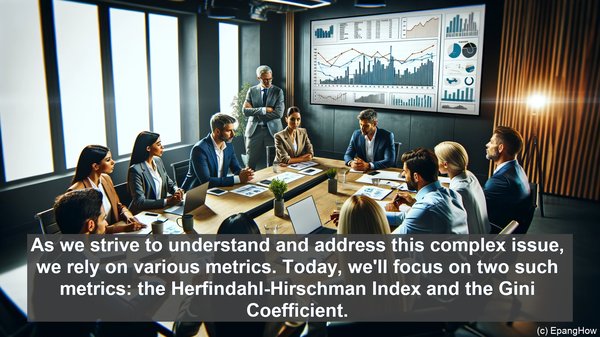Introduction: The Quest for Inequality Measurement
Hello everyone! Inequality has long been a subject of concern across various domains, from economics to sociology. As we strive to understand and address this complex issue, we rely on various metrics. Today, we’ll focus on two such metrics: the Herfindahl-Hirschman Index and the Gini Coefficient. While both aim to quantify inequality, they do so in distinct ways. Let’s dive in!
The Herfindahl-Hirschman Index (HHI): A Concentration Measure
The Herfindahl-Hirschman Index, often used in the context of market concentration, provides insights into the distribution of market share among firms. It’s calculated by summing the squared market shares of all firms in a given market. A higher HHI indicates greater concentration, potentially signaling reduced competition. This metric is particularly useful in assessing monopolistic or oligopolistic market structures. However, it’s important to note that the HHI’s focus is limited to market dynamics and doesn’t capture broader societal inequality.
The Gini Coefficient: A Holistic Measure
In contrast, the Gini Coefficient offers a more comprehensive view of inequality. Derived from the Lorenz curve, it measures the extent to which a distribution deviates from perfect equality. Ranging from 0 to 1, a higher Gini Coefficient signifies greater inequality. What sets the Gini Coefficient apart is its ability to account for inequality across an entire distribution, be it income, wealth, or other variables. Its versatility has made it a widely-used metric in diverse fields. However, it’s worth noting that the Gini Coefficient may not capture nuances within specific segments of the distribution.

Comparing the Two: When to Use Which?
While both the HHI and Gini Coefficient provide valuable insights, their applications differ. The HHI is best suited for analyzing market dynamics, making it indispensable in antitrust evaluations and competition policy. On the other hand, the Gini Coefficient’s strength lies in its ability to assess inequality across various domains. It’s often employed in socio-economic research, policy formulation, and international comparisons. Understanding the specific research question or policy objective is crucial in selecting the appropriate metric.

Limitations: What the Metrics May Miss
As with any metric, the HHI and Gini Coefficient have limitations. The HHI’s exclusive focus on market concentration means it may not capture inequality arising from factors beyond market dynamics. Similarly, the Gini Coefficient, while comprehensive, may not fully capture disparities within specific groups or regions. Complementary use of multiple metrics, along with qualitative analysis, can help mitigate these limitations.
